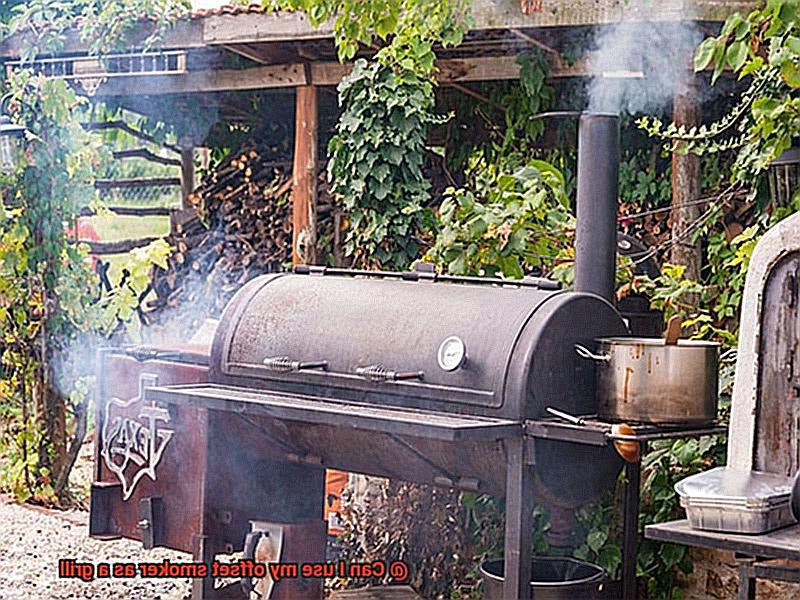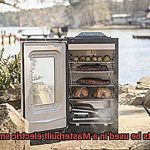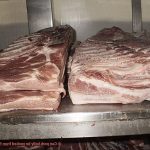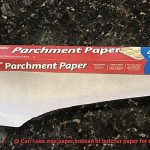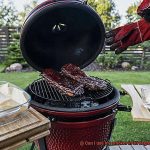Summer is finally here, which means it’s time for backyard BBQs and grilling up a storm. But what if you’re unsure whether your trusty offset smoker can double as a grill? Don’t worry – the answer is a resounding yes. Whether you’re looking to save space by using one piece of equipment for both smoking and grilling or simply want to expand your culinary horizons, using your offset smoker as a grill is a great option.
In this blog post, we’ll dive into everything you need to know about using your offset smoker as a grill. We’ll discuss the benefits and drawbacks of this approach, including how different types of offset smokers might affect your grilling experience. Plus, we’ll offer up some tips on how to get the most out of your equipment and elevate your BBQ game.
So whether you’re an experienced pitmaster or just starting out on your grilling journey, read on to learn all about using your offset smoker as a grill – and get ready to take your summer cookouts to the next level.
Contents
What is an Offset Smoker?
If you’re a barbecue aficionado, an offset smoker is a must-have tool in your arsenal. But what sets this smoker apart from others, and how does it work?
At its core, an offset smoker is a smoker that uses indirect heat to cook food. It consists of two distinct parts: the firebox and the cooking chamber. The firebox, which is located on one side of the smoker, is where the fire is started. This creates smoke and heat, which are then drawn into the cooking chamber through a small opening.
The offset design of the smoker enables greater control over temperature and smoke. The gap between the firebox and the cooking chamber means that food can be cooked at lower temperatures and for extended periods of time. This results in succulent, smoky meat with unparalleled flavor.
Offset smokers are beloved by barbecue enthusiasts because they can be used for a variety of cooking methods. They can smoke, grill, roast, or bake food to perfection. However, if you want to use your offset smoker as a grill, there are a few things to keep in mind.
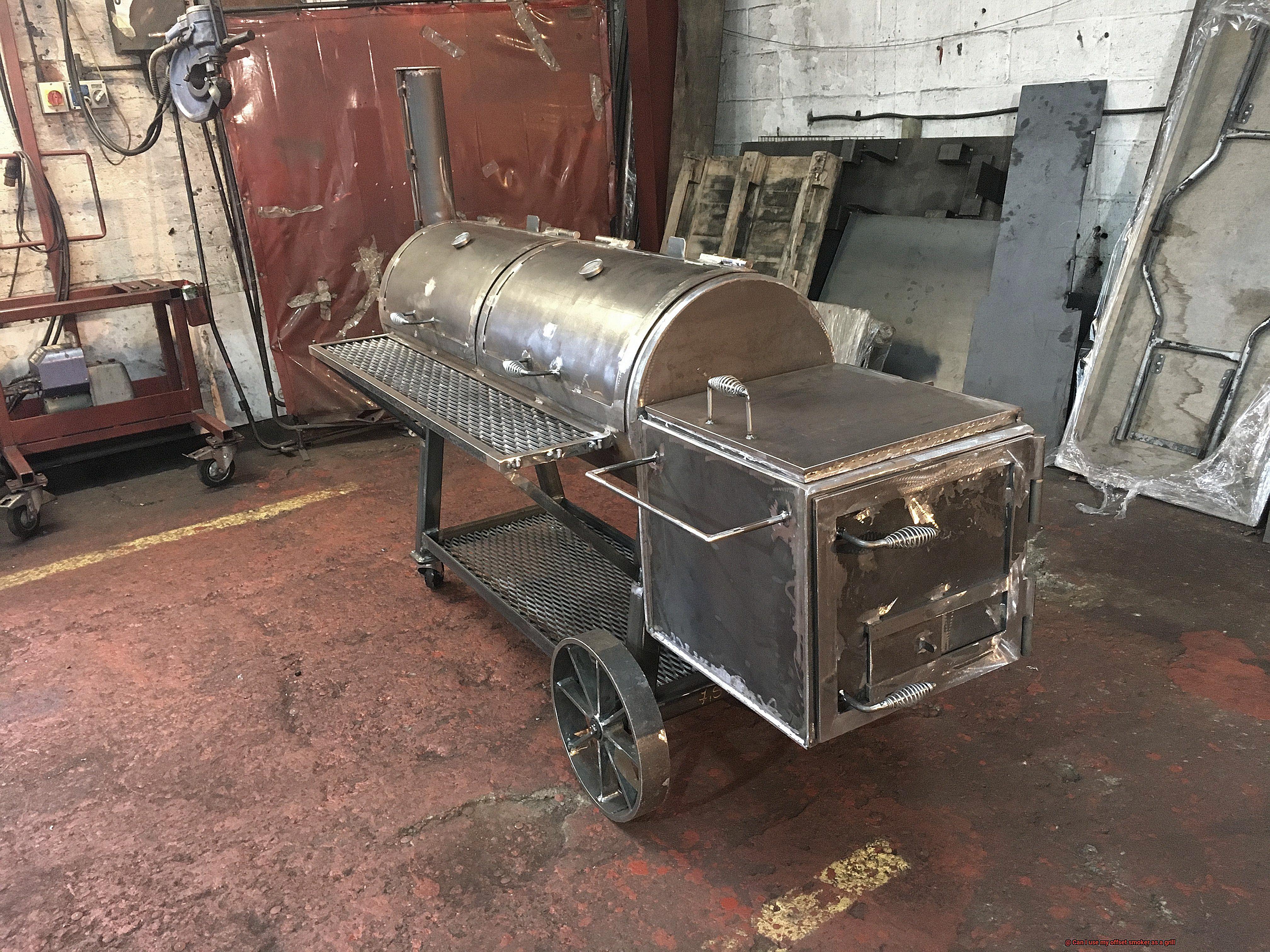
Firstly, ensure that your offset smoker has a suitable cooking grate for grilling. Some offset smokers come with a dedicated cooking grate for grilling, while others may require you to purchase one separately. It’s crucial to select the right size of cooking grate that fits snugly on the firebox.
Secondly, adjust the airflow in your offset smoker for grilling. Unlike smoking, grilling necessitates higher temperatures and more direct heat. To achieve this, open the dampers on the firebox to let more air into the fire. This will increase the temperature inside the smoker and create more direct heat for grilling.
Lastly, use the appropriate fuel for grilling in an offset smoker. Charcoal is the most common fuel used for grilling, but you can also use wood or a combination of both. But be sure not to overfill the firebox with fuel as this can cause uneven heat distribution and potentially ruin your food.
Benefits of Using an Offset Smoker for Grilling
Offset smokers offer a variety of benefits that will have you wondering why you didn’t make the switch sooner. Here’s a breakdown of some of the perks:
- Large Cooking Surface Area: Say goodbye to grilling in batches because your grill is too small. With an offset smoker, you can cook large quantities of food all at once, making it perfect for family gatherings, parties, or just a big appetite.
- Precise Temperature Control: No more burnt or undercooked foods here. Offset smokers allow for precise temperature control, ensuring that your food is cooked evenly and to perfection.
- Smoky Flavor: The use of wood or charcoal as fuel produces smoke that infuses your food with a delicious smoky flavor that is highly sought after among BBQ enthusiasts. Plus, who doesn’t love that signature smoky scent wafting through the air?
- Slow Cooking Capabilities: Slow cooking is ideal for tougher cuts of meat, helping to break down the connective tissue and resulting in a tender and juicy final product that will have your taste buds singing with joy.
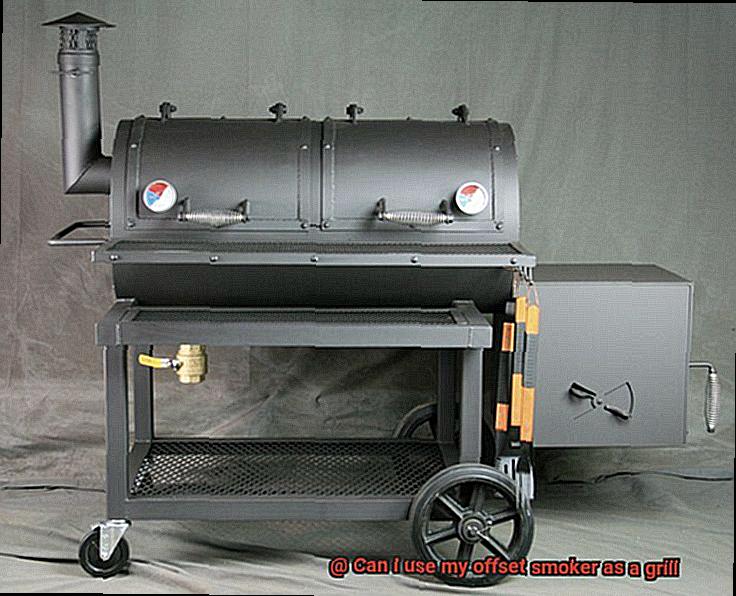
Choosing the Right Cooking Grate for Grilling
Before you start cooking up a storm, let’s talk about the importance of choosing the right cooking grate.
First and foremost, size matters when it comes to grilling. It’s crucial to choose a cooking grate that fits securely within your offset smoker and provides enough surface area for your grilling needs. You don’t want it wobbling around or falling off mid-cook, and you definitely don’t want to be stuck cooking in batches while your hungry guests wait impatiently.
The material of your cooking grate also plays a significant role in the quality of your grill marks and overall flavor. Cast iron is an excellent choice for its exceptional heat retention and distribution capabilities. It allows for even cooking and searing of meats, resulting in mouthwatering flavors and perfect grill marks. However, cast iron can be quite heavy, and it requires proper maintenance to prevent rusting. Stainless steel is another durable option that resists rusting but may not retain heat as well as cast iron.
Spacing is another critical factor to consider when choosing a cooking grate. If you plan on grilling smaller items like veggies or shrimp, opt for a closer spacing between grates to prevent them from slipping through the cracks. On the other hand, larger items like whole chickens or roasts require wider spacing to accommodate their size.
Adjusting Airflow for Grilling in an Offset Smoker
Using an offset smoker as a grill is an excellent way to achieve that unique smoky flavor that only comes from cooking with wood. However, to achieve the perfect grilling environment, adjusting the airflow is crucial. As an expert in this area, I’m here to share some tips and tricks for adjusting the airflow on your offset smoker.
First things first, before you start grilling, make sure you have a secure and adequately sized cooking grate. Cast iron or stainless steel grates are ideal choices for creating those signature grill marks and flavors.
Now let’s dive into adjusting the airflow. To begin, open all the vents on your offset smoker and get a hot fire going. Once you have a good bed of hot coals, you can start to adjust the airflow by closing down the vents slightly. This will reduce the amount of oxygen that flows into the smoker and help decrease the amount of smoke produced.
It’s crucial to remember that for grilling, less smoke is better. Therefore, monitoring the temperature closely is essential. The ideal temperature for grilling is between 350-450°F, but every smoker is different. You’ll need to adjust the airflow accordingly to achieve optimal temperatures. If the temperature is too high, close down the vents slightly to reduce oxygen flow. Conversely, if it’s too low, open up the vents slightly to allow more oxygen in.
Experimentation is key when it comes to adjusting airflow on your offset smoker. Finding the perfect balance may take some trial and error, but don’t give up. Once you hit that sweet spot, grilling on an offset smoker will provide a fantastic experience, allowing you to achieve delicious grilled foods with that unique smoky flavor.
Types of Fuel Suitable for Grilling in an Offset Smoker
When it comes to grilling in an offset smoker, the type of fuel you use can make a significant difference in the flavor and cooking process. Let’s take a closer look at the different types of fuel suitable for grilling in an offset smoker and their advantages and disadvantages.
Charcoal: The Classic Fuel
Charcoal is the most popular fuel for grilling in an offset smoker because it provides a consistent heat source that allows you to cook your food evenly. It also imparts a rich and smoky flavor that is perfect for barbecue. Additionally, charcoal produces less smoke than other types of fuel, making it ideal for cooking in enclosed spaces. However, charcoal requires more attention during the cooking process, as it needs to be lit and maintained throughout the cook.
Wood Pellets: Easy and Flavorful
Wood pellets are another option that is easy to use and produces a rich and smoky flavor in your food. They are made from compressed sawdust and come in pre-made bags that can be easily loaded into your smoker. However, they may not offer the same depth of flavor as wood chips or chunks.
Wood Chips/Chunks: The Traditional Approach
Using wood chips or chunks is a traditional approach to fueling your offset smoker grill and will produce a rich and smoky flavor in your food. However, they may require more attention during the cooking process than other types of fuel. Wood chips or chunks can be added directly to your smoker, but need to be monitored closely to ensure they don’t create too much smoke or burn too quickly.
Propane or Natural Gas: Quick and Easy Heat
Propane or natural gas are convenient fuel options for offset smoker grilling because they require minimal preparation time and effort. They provide consistent heat and allow for precise temperature control. However, they do not impart any smoky flavor to the food, so they may not be the best choice for those who want that traditional barbecue taste.
Lump Charcoal: High Heat and Less Ash
Lump charcoal is a type of charcoal that offers high heat and less ash than regular charcoal. It’s perfect for searing meats and achieving a crispy exterior. However, it can be more expensive than regular charcoal and may not be as readily available.
Briquettes: Affordable and Consistent
Briquettes are an affordable and consistent type of charcoal that provides a steady heat source, allowing you to cook your food evenly. However, they may produce more ash than other types of fuel and may not offer the same depth of flavor as wood or lump charcoal.
Tips for Getting the Best Results When Grilling with an Offset Smoker
Grilling with an offset smoker can be a bit tricky, but with the right tips and techniques, you can achieve mouth-watering, flavorful meats. Here are some essential tips to keep in mind:
Use the Right Type of Fuel
Choosing the right type of fuel is crucial when grilling with an offset smoker. Wood and charcoal are the most common fuels used, and each has its pros and cons. Wood gives your food a smoky flavor but can be challenging to control the temperature. Charcoal, on the other hand, burns hotter and more consistently but doesn’t add as much smoke flavor.
Control the Temperature
Temperature control is key to achieving that perfect flavor in your food. Use a digital thermometer to monitor the temperature inside your smoker. It’s important to maintain a consistent temperature throughout the cooking process to ensure even cooking and prevent flare-ups.
Select the Right Wood
The type of wood you use for smoking can make a significant difference in the flavor of your food. Different types of wood produce different smoke levels and flavors, so it’s important to choose a wood that complements the meat you’re grilling. For instance, mesquite wood is excellent for beef, while applewood is better suited for pork or poultry.
Arrange Your Coals Properly
When setting up your grill, arrange your coals to allow for indirect heat. This means placing them on one side of the grill and putting your food on the other side. This technique helps prevent flare-ups and gives you more control over the cooking process.
Add Moisture
Adding moisture to your grill is essential to prevent your food from drying out. Consider using a water pan to create steam and keep everything moist.
Pros and Cons of Using an Offset Smoker as a Grill
Before you jump in with both feet, let’s weigh the pros and cons of this method to help you make an informed decision.
On the plus side, offset smokers boast a large cooking surface, ideal for preparing meals for a large group of people. Furthermore, using an offset smoker adds an authentic smoky flavor that would be hard to replicate with other grilling methods. Lastly, offset smokers are versatile since they can be used for smoking and grilling, giving you more options when it comes to outdoor cooking.
However, there are also some cons to consider. First of all, offset smokers are not designed for grilling, which may make it challenging to control the temperature, particularly if you’re new to using it. Secondly, it may take longer to cook your food with an offset smoker than with a traditional grill because it is not designed specifically for grilling. Lastly, offset smokers require more maintenance than traditional grills, especially when it comes to cleaning and seasoning the cooking surface.
5XpE3HKDruY” >
Conclusion
In conclusion, the answer is a resounding yes – you can use your offset smoker as a grill. This method of outdoor cooking offers a range of benefits that will take your BBQ game to the next level. With its large surface area, precise temperature control, smoky flavor, and slow cooking capabilities, an offset smoker is an excellent option for grilling.
However, there are some things to keep in mind when using an offset smoker as a grill. Firstly, make sure that your smoker has a suitable cooking grate for grilling. The size and material of the grate are essential factors that will impact the quality of your grill marks and overall flavor. Additionally, spacing is crucial when selecting a cooking grate.
Adjusting airflow is another critical factor when grilling on an offset smoker. Achieving optimal temperatures may require some trial and error, but it’s worth experimenting with different adjustments to find the perfect balance.
Before diving into using an offset smoker as a grill, consider both the pros and cons carefully. While this method of outdoor cooking offers numerous benefits, it’s important to note that temperature control and maintenance requirements may differ from traditional grills.
With these tips in mind and some practice under your belt, you’ll be well-equipped to take your summer cookouts to new heights.

